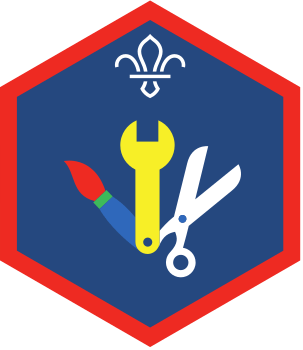Patch it up
You’ll need
- Tables
- Chairs
- Needles and thread, in different colours
- Fabric scissors
- Needle threader
- Pins
- Old clothing
- Spare or scrap fabric, in different colours
Gather the materials
- Have everyone in the group bring with them to the session an item or items of clothing that they don’t mind sewing. This can be anything, but preferably something old with holes in it. You could always make small holes or tears in unwanted garments that are well-worn or ragged. Thin materials, like T-shirt cotton, are easiest to sew.
- Get together some unused cloth and scraps of fabric to use for patches. Different colours are needed to match different colour clothes. Think about this when sourcing your thread too.
- Set out the sewing equipment on tables. You’ll need enough pins, needles and scissors for everyone.
Ready to repair
- Everyone should take one item of clothing and find a hole or tear in it. Use scissors to cut away any frayed ends and neaten up the fabric. You could cut the hole or tear into a different size or shape.
- Give out some scrap fabric or unwanted clothes. Everyone should look for something that they feel goes with the garment they’re repairing. Then, they should use their scissors to cut enough fabric to cover the hole or tear, with 1cm of excess all the way around.
- Put the fabric inside the garment, underneath where the hole is. You could also place the fabric over the damaged area, if preferred. Check that the fabric covers the hole completely. Then, pin it in place.
- Give out thread. Some of your sewers may want a specific colour thread. Each person will need enough to sew all the way around their patch.
- See how much everyone knows about sewing techniques. Patches can be sewn in several different ways.
- When everyone’s stitched on their patch, they should tie a knot in the end of the thread used and cut off any extra. Remove the pins and hold up the garment to check how the patch looks.
Reflection
Everyone should've had a go at repairing a hole or tear in an old piece of clothing. There was an opportunity to be creative and stylish, and try new sewing techniques to change how their garment looks. What techniques or accessories would’ve made your garment look even better? Why is it so important for us to repair our clothes and make them last? Answer: It’s better for the environment, more sustainable, saves money and helps keep items you care about looking and feeling tip-top. Plus, you never know when you might be out hiking or on camp and need to do a quick repair job!
Safety
All activities must be safely managed. You must complete a thorough risk assessment and take appropriate steps to reduce risk. Use the safety checklist to help you plan and risk assess your activity. Always get approval for the activity, and have suitable supervision and an InTouch process.
- Scissors
Supervise young people appropriately when they’re using scissors. Store all sharp objects securely, out of the reach of young people.
- Sharp objects
Teach young people how to use sharp objects safely. Supervise them appropriately throughout. Store all sharp objects securely, out of the reach of young people.
Challenge super sewers to use all four of the suggested stitches to repair damage on their garment. The humble running stitch is the simplest of these, so those new to sewing should master this one first.
- Substitute iron-on patches or use fabric glue if anyone in the group has difficulty sewing with needle and thread
- A needle-threader should be used in groups where people have visual impairments.
All Scout activities should be inclusive and accessible.
Who knows all there is to know about how we sew? Practise your skills and use your creativity as you take on a sewing project as part of the Craft Activity Badge.
Young people could bring their own garments and choose what kind of alterations or repairs to make.


